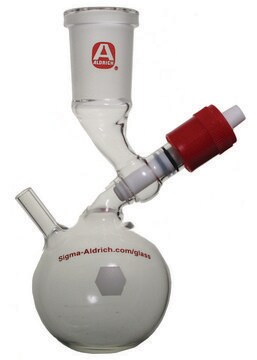840052C
Avanti
Heart PC
Avanti Polar Lipids 840052C
Synonyme(s) :
L-α-phosphatidylcholine (Heart, Bovine)
About This Item
Produits recommandés
Essai
>99% (TLC)
Forme
liquid
Conditionnement
pkg of 1 × 2.5 mL (840052C-25mg)
pkg of 2 × 4 mL (840052C-200mg)
pkg of 5 × 4 mL (840052C-500mg)
Fabricant/nom de marque
Avanti Polar Lipids 840052C
Concentration
10 mg/mL (840052C-25mg)
25 mg/mL (840052C-200mg)
25 mg/mL (840052C-500mg)
Type de lipide
phosphoglycerides
phospholipids
Conditions d'expédition
dry ice
Température de stockage
−20°C
InChI
1S/C42H80NO8P/c1-6-8-10-12-14-16-18-20-21-23-25-27-29-31-33-35-42(45)51-40(39-50-52(46,47)49-37-36-43(3,4)5)38-48-41(44)34-32-30-28-26-24-22-19-17-15-13-11-9-7-2/h14,16,20-21,40H,6-13,15,17-19,22-39H2,1-5H3/b16-14-,21-20-/t40-/m1/s1
Clé InChI
JLPULHDHAOZNQI-ZTIMHPMXSA-N
Catégories apparentées
Description générale
Application
Actions biochimiques/physiologiques
Conditionnement
Mention d'avertissement
Danger
Mentions de danger
Classification des risques
Acute Tox. 3 Inhalation - Acute Tox. 4 Oral - Carc. 2 - Eye Irrit. 2 - Repr. 2 - Skin Irrit. 2 - STOT RE 1 Oral - STOT SE 3
Organes cibles
Respiratory system
Code de la classe de stockage
6.1D - Non-combustible, acute toxic Cat.3 / toxic hazardous materials or hazardous materials causing chronic effects
Classe de danger pour l'eau (WGK)
WGK 3
Point d'éclair (°F)
does not flash
Point d'éclair (°C)
does not flash
Listes réglementaires
Les listes réglementaires sont principalement fournies pour les produits chimiques. Seules des informations limitées peuvent être fournies ici pour les produits non chimiques. L'absence d'indication signifie qu'aucun des composants n'est répertorié. Il incombe à l'utilisateur de s'assurer de l'utilisation sûre et légale du produit.
EU REACH Annex XVII (Restriction List)
Faites votre choix parmi les versions les plus récentes :
Certificats d'analyse (COA)
It looks like we've run into a problem, but you can still download Certificates of Analysis from our Documents section.
Si vous avez besoin d'assistance, veuillez contacter Service Clients
Déjà en possession de ce produit ?
Retrouvez la documentation relative aux produits que vous avez récemment achetés dans la Bibliothèque de documents.
Notre équipe de scientifiques dispose d'une expérience dans tous les secteurs de la recherche, notamment en sciences de la vie, science des matériaux, synthèse chimique, chromatographie, analyse et dans de nombreux autres domaines..
Contacter notre Service technique![C11 TopFluor® Galactosyl Ceramide N-[11-(dipyrrometheneboron difluoride)undecanoyl]-D-galactosyl-β1-1′-D-erythro-sphingosine, powder](/deepweb/assets/sigmaaldrich/product/images/246/046/3bdfc7ea-d7b5-45cf-b4d0-b7f21ea91875/640/3bdfc7ea-d7b5-45cf-b4d0-b7f21ea91875.jpg)









